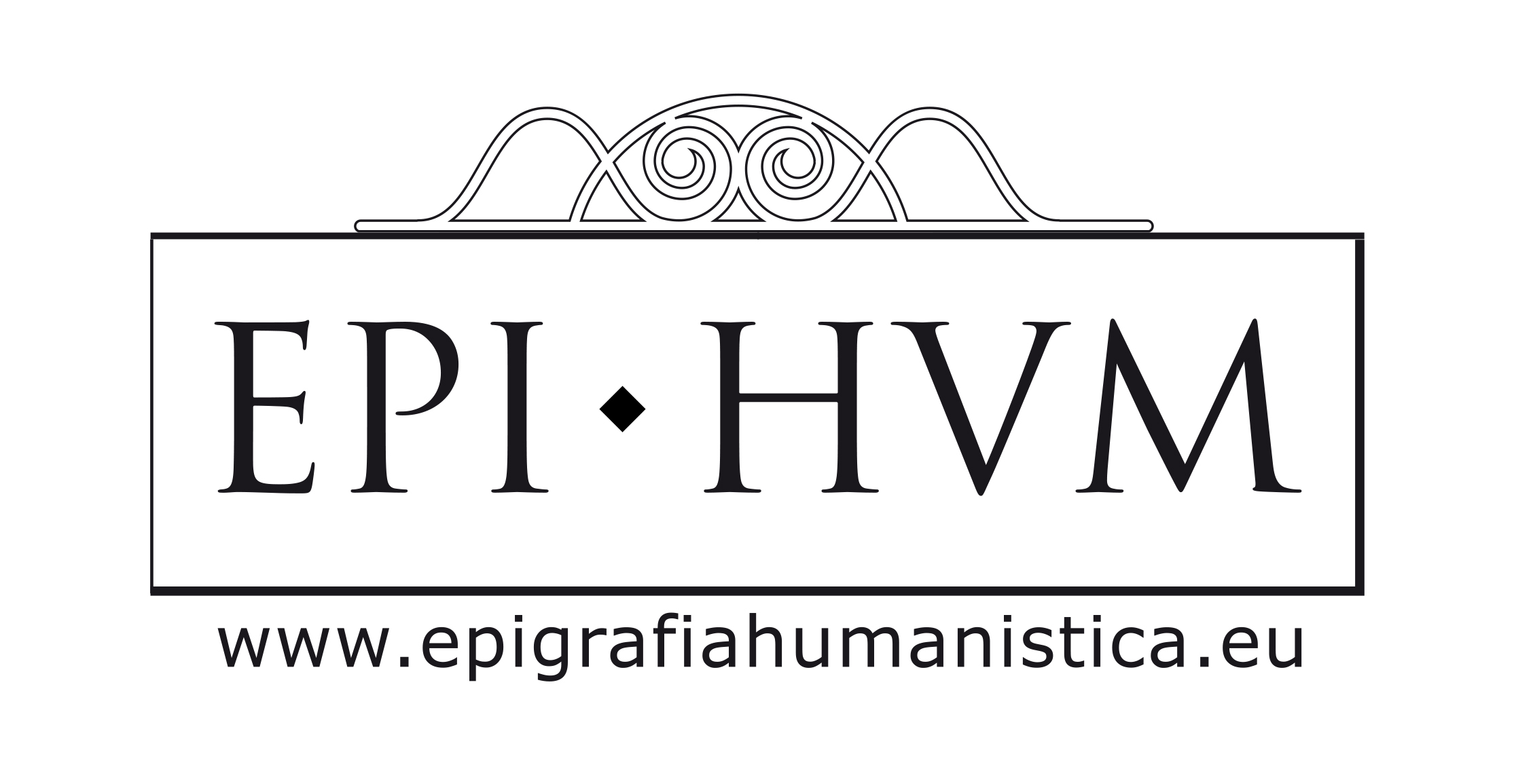Planteamiento de la investigación
El proyecto abordará el estudio de las inscripciones humanísticas en la península ibérica y su evolución a través de los principales programas epigráficos que se desarrollan en España y Portugal durante de los siglos XVI y XVII, en el contexto de los diferentes usos políticos de las escrituras de aparato que realizaron las monarquías que reinaron en ambos países, así como la nobleza y el clero. El estudio de la epigrafía de este periodo ha sido, hasta la fecha, muy limitado, y por lo general insertado en los estudios de la arquitectura o la escultura de estos siglos. No existe en España, ni en Portugal, un estudio pormenorizado de las inscripciones de este periodo, a pesar de que ambos países gozan de una larga tradición en el estudio de la epigrafía de época antigua y medieval. La introducción de la escritura humanística en la península ibérica se realiza en los últimos años del siglo XV y será, sobre todo, en la primera mitad del siglo XVI cuando se desarrollen los primeros programas epigráficos que sigan los modelos del Renacimiento italiano. La mayoría de estas inscripciones han sido insuficientemente estudiadas y algunas de ellas, reproducidas en diversas obras del siglo XVIII y XIX, han venido siendo citadas con abundantes errores y lagunas por la historiografía moderna, sin que se hayan sometido a un estudio epigráfico pormenorizado.
Como paso previo al estudio diacrónico, desde una perspectiva multidisciplinar, de los testimonios epigráficos de los siglos XV y XVI en los reinos hispánicos, se realizará una base de datos en línea que recogerá todas las inscripciones recopiladas y estudiadas por el equipo investigador. Esta base de datos será la primera de su naturaleza en toda Europa y será abordada desde la experiencia acumulada por el equipo investigador en el campo de la edición de catálogos epigráficos, así como en el uso de las Tecnologías de la Información y la Documentación aplicadas a la investigación epigráfica. La base de datos de epigrafía hispánica de los siglos XVI y XVII se realizará a partir de la experiencia de los proyectos nacionales que, desde los años noventa del pasado siglo, se han puesto en marcha en los países de nuestro entorno. A diferencia de otras bases de datos, el nuevo sistema de información será multiplataforma, multiusuario, extensible, y de una capacidad de descripción ampliada, compatible con los estándares de la web semántica en formato RDF, permitiendo el intercambio de archivos en formato Epidoc y TEI-XML, facilitando su integración en Europeana. El nuevo sistema de catalogación, registro y gestión de inscripciones epigráficas, será único en su clase no sólo por la información que contendrá, inscripciones inéditas de los siglos XVI y XVII en Europa, sino por el desarrollo tecnológico en cuanto a técnicas de procesamiento de la información, recuperación de información y Linked Data, aún no implantadas en sistemas análogos en España y Portugal.
Research approach
The project will address the study of the humanistic inscriptions on the Iberian peninsula and their evolution through the main epigraphic programs developed in Spain and Portugal during the sixteenth and seventeenth centuries, in the context of the different political uses of apparatus scripts made by the monarchies that ruled in both countries and the nobility and clergy as well. The study of inscriptions of this period has been, to date, very limited, and has been usually embedded in studies of architecture or sculpture of these centuries. There is no detailed study of the inscriptions of this period both in Spain or Portugal, although both countries have a long tradition in the study of epigraphy of ancient and medieval times. The introduction of humanistic script on the Iberian Peninsula takes place in the late fifteenth century and the first epigraphic programs which follow the models of the Italian Renaissance will be developed especially in the first half of the sixteenth century. Most of these inscriptions have been insufficiently studied and several of them, quoted in various works of the eighteenth and nineteenth century, have been cited by modern historiography with errors and gaps, without having undergone a detailed epigraphic study.
As a prelude to the diachronic and multidisciplinary study of the epigraphic testimonies from the fifteenth and sixteenth centuries in the Spanish kingdoms that we aim, an online database that will collect all entries compiled and studied by the research team will be built. This database will be the first of its kind in Europe and will be addressed from the experience gained by the research team in the field of editing epigraphic catalogs as well as in the use of Information Technologies and Documentation applied to epigraphic research. The database of Hispanic epigraphy of the sixteenth and seventeenth centuries will be made from the experience of national projects that, since the nineties of the last century, have taken place in our neighboring countries. Unlike other databases, the new information system will be multi-platform, multi-user, extensible, and with expanded description capabilities, compatible with the standards of the Semantic Web in RDF format, allowing file sharing in EpiDoc and TEI -XML formats, easing their aggregation in Europeana. The new cataloguing, recording and management system of epigraphic inscriptions will be unique in its kind not only because of the information it will contain (unpublished inscriptions of the sixteenth and seventeenth centuries in Europe), but by the technological advances regarding techniques for processing and retrieval of information and Linked Data, not yet implemented in analog systems in Spain and Portugal.
 Base de Epigrafía Online
Base de Epigrafía Online